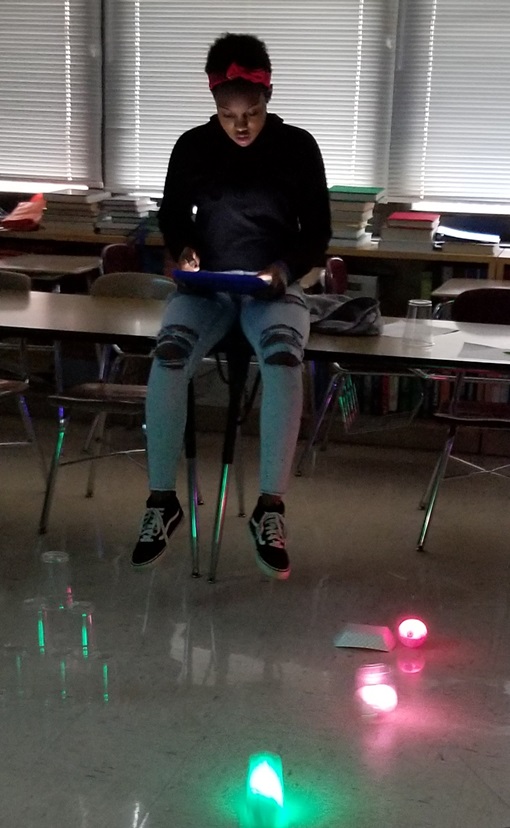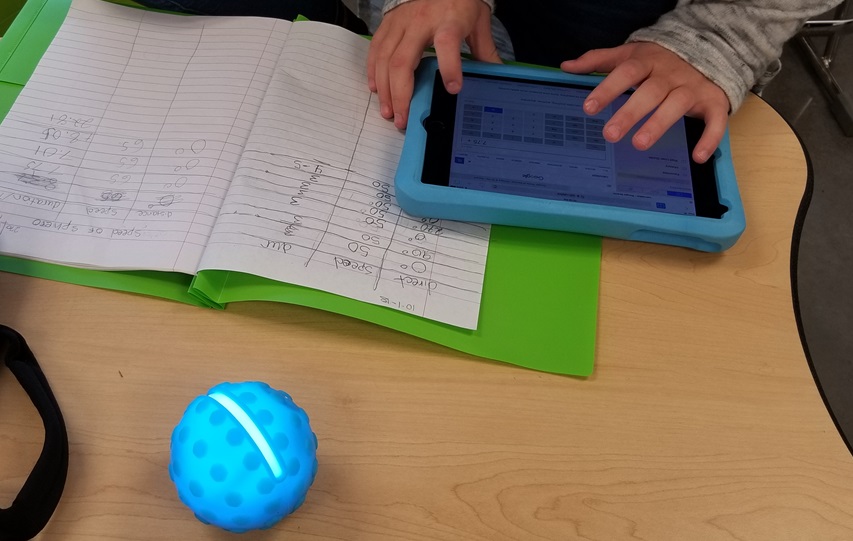Look out for robots invading classrooms in Buncombe County, thanks to the efforts of Chris Cutshall, Lead AIG facilitator. Chris has gained an interest in using robotics since the district’s AIG department was challenged to incorporate more STEAM into their curriculum back in 2010. Through the influence of an online professional development course provided by the Exploratorium in San Francisco, attending Digital Learning Through Making and Doing: Mechatronics, Robotics, and the “Maker Movement” through NCCAT, and various texts, such as Invent to Learn by Sylvia Martinez and Gary Stager, Chris has been inspired and directed towards including robotics as a creative and innovative learning tool within the classroom.
Chris first started utilizing robotics in the classroom for AIG students in the 7th and 8th grades at North Buncombe Middle School. Additionally, Chris created a club called Spectacular Technicians (“Spec Tech”), where students across grade, ability, and socioeconomic levels came together for time with robotics and applied technologies. Chris said that this club sparked “high levels of student engagement and provided opportunities for students to showcase on campus”.
 To foster creative and innovative thinking, Chris went to Goodwill and purchased toys and other items for her class so that students could break them apart and “harvest the organs”. The students then used the “organs” to create new products and inventions because she wanted opportunities for her students to deconstruct, build, plan, and experiment. She has a goal for students to have a “designer perspective in the classroom vs. a consumer perspective”. This student-centered approach puts a lot of control, emphasis, and opportunity in the hands of the student, rather than the teacher.
To foster creative and innovative thinking, Chris went to Goodwill and purchased toys and other items for her class so that students could break them apart and “harvest the organs”. The students then used the “organs” to create new products and inventions because she wanted opportunities for her students to deconstruct, build, plan, and experiment. She has a goal for students to have a “designer perspective in the classroom vs. a consumer perspective”. This student-centered approach puts a lot of control, emphasis, and opportunity in the hands of the student, rather than the teacher.
“Kids are super interested in anything that they can control”
“One overall goal is for students to start to think about variables, input and output, and how this translates across all academic disciplines”
-Chris Cutshall
Because there was no other school-wide opportunity for her students to share their innovative learning, Chris created “March Maker Madness, a “Maker Faire” styled event where students got to showcase their STEAM projects to parents for an evening of innovation and fun! Students displayed and demonstrated paper roller coaster projects, Rasperry Pi build ups and programming, robots and other technologies such as Makey Makey, Sphero, and Hummingbird. The following links will take you to Symbaloo pages that Chris created for her students for ideas and links for both March Maker Madness and Paper Roller coaster projects. Through these projects and additional opportunities for robotics and modern technology integration within the classroom, students could develop and extend an “input and output” and “if-then” mindset. Chris stresses the importance of students feeling as if “they are in control, as they are the one’s telling the machines how to function”.

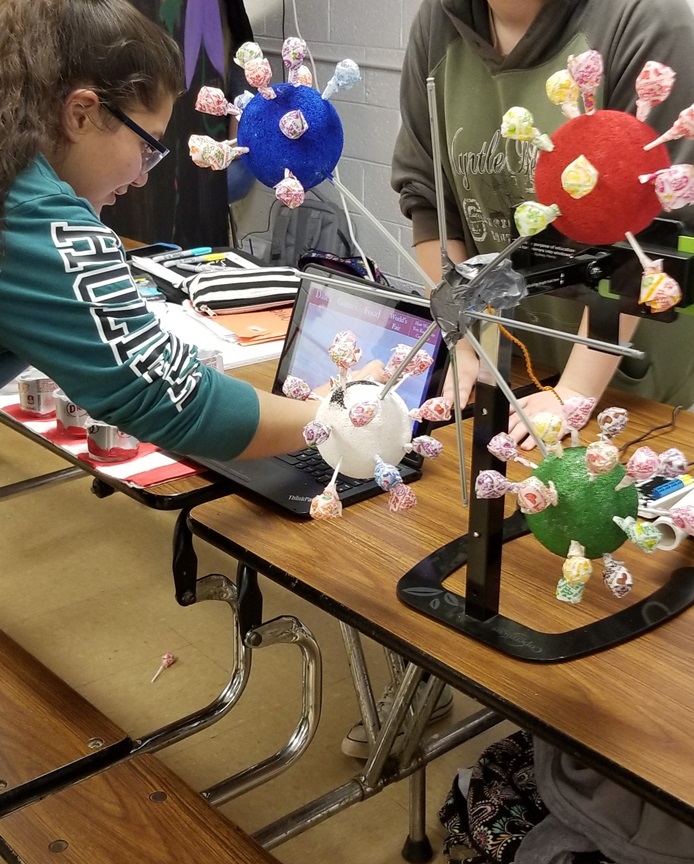
One obvious challenge associated with robotics and programming tools in the classroom is the cost. Through grant writing and Donor’s Choose projects, Chris has slowly been able to obtain many of these resources. The district has also worked towards allocating funds as they seek to building up supply. Another challenge related with this tech integration is the learning curve, more so for the teachers than the students. Chris shared how students can often “get ahead of you”, and she “loves this challenge”. This can be a barrier for some teachers to jump on board; however understanding these challenges from the start can be helpful. Both teachers and students can tackle many of these obstacles through “collaboration and research, from the student perspective, with occasionally seeking out outside experts for support”. The potential benefits greatly outweigh the risks, as students have the potential for transformative learning experiences.
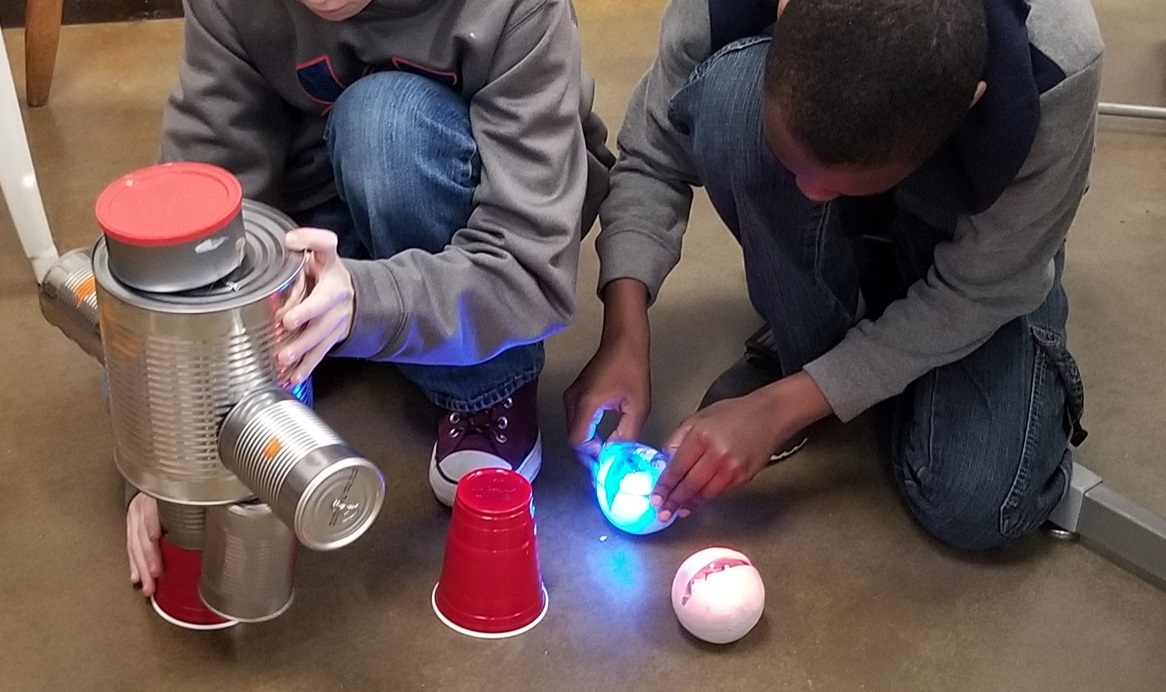
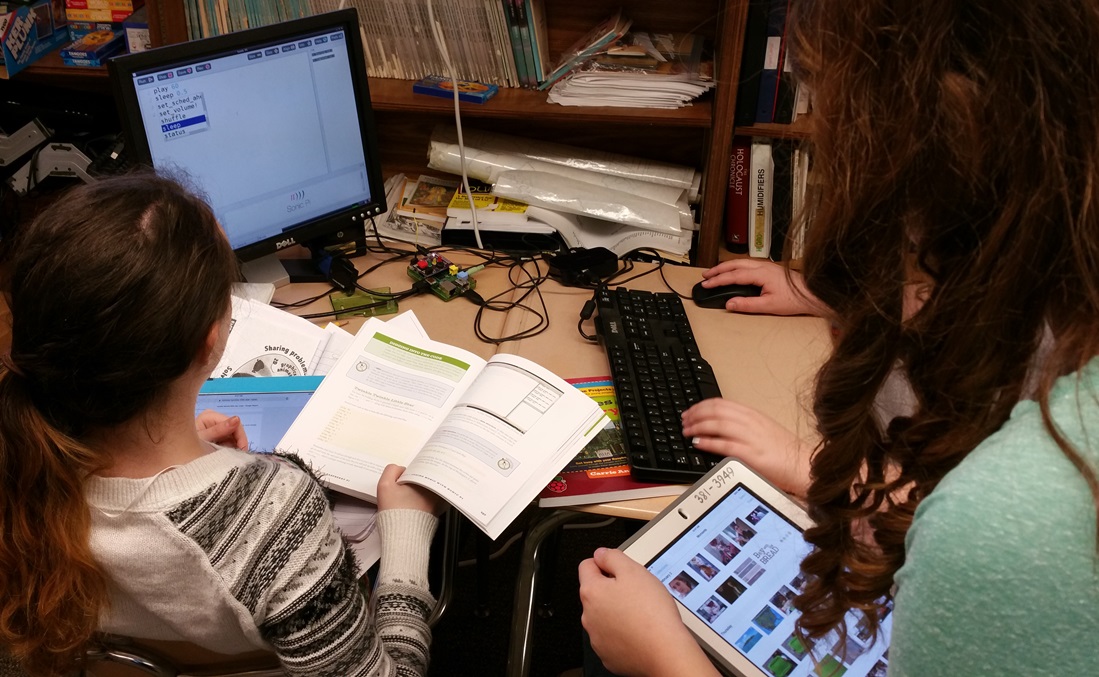
Now that she is working with the central office, she has been able to focus on more grade levels and broader implementation. Currently, Chris goes into classrooms and supports teachers and students with initial robotics usage and helps with any questions or concerns that may emerge. With STEAM labs in every elementary school within Buncombe County, students have opportunities to create, innovate, and problem solve using fun and engaging tools and technology. The AIG Department embeds robotics and technology into their enrichment curriculum maps to continue this hands-on engagement and creative thinking. With technology, and more specifically robotics and programming, it becomes easier to vertically align curriculum. This technology can be used with any subject area, as a fellow AIG Specialist recently demonstrated by creating a poetry unit where students could “bring to life, critical elements, such as the theme of a poem, via Hummingbird robots”. As seen below, students created musical instruments using Makey Makey, integrating science, technology and the arts.
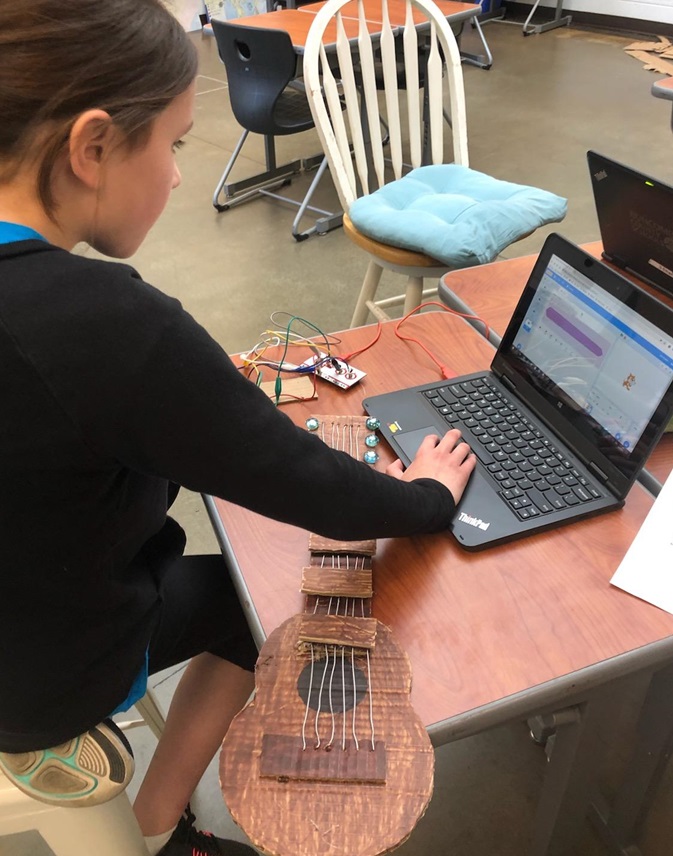
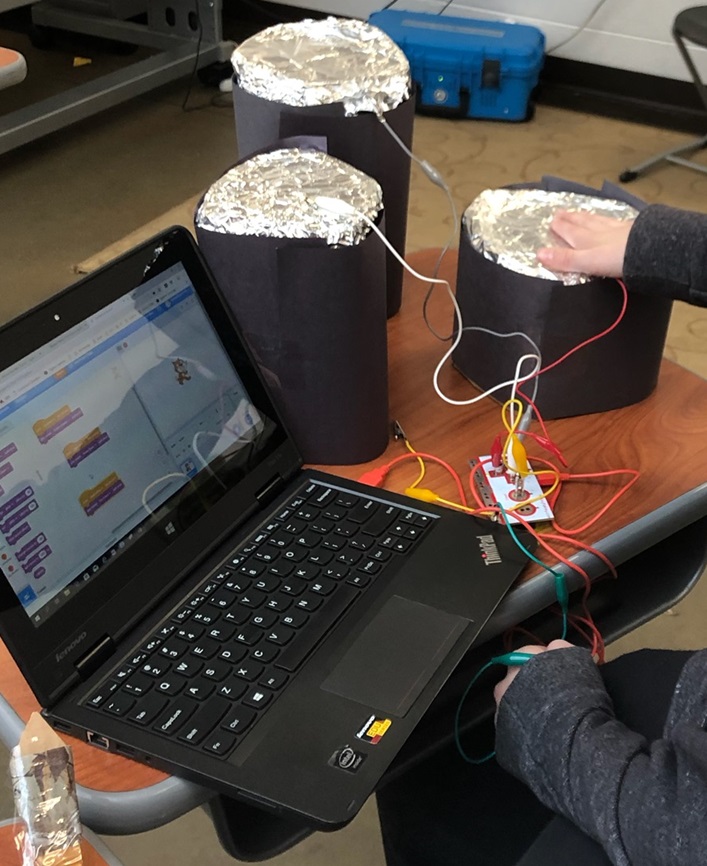
Instruments made using Makey Makey
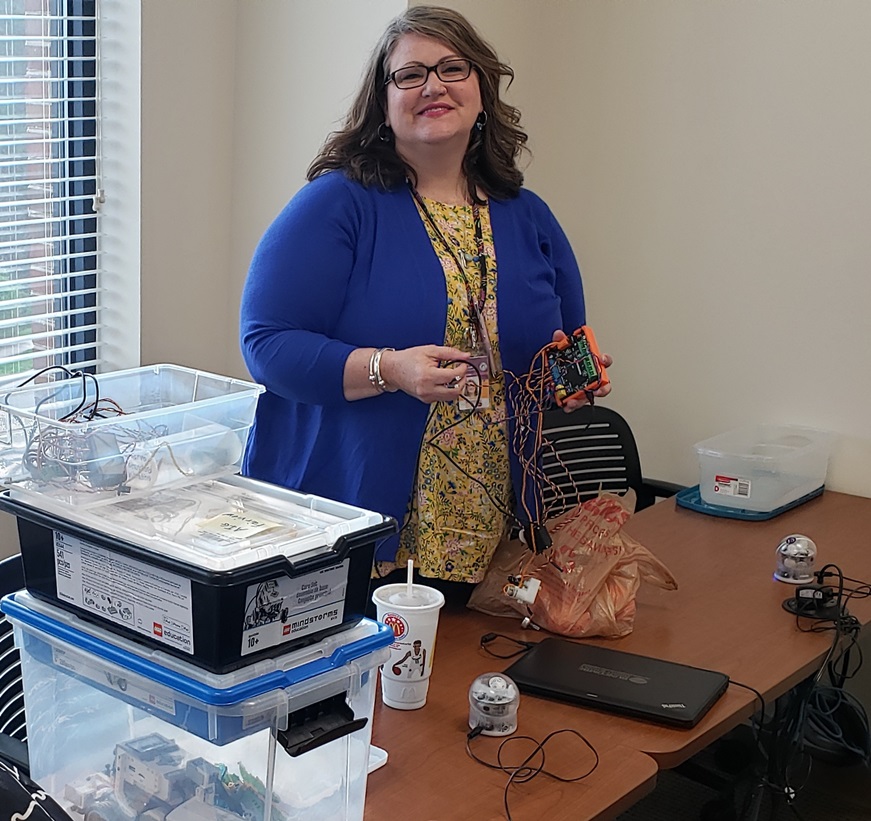
Chris recently presented at Western Carolina University’s second annual Creativity in the Digital Age conference on March 30th, 2019 at the Biltmore Park campus in Asheville. For her presentation, she brought in and demonstrated some of the robots that her students get to use. For materials and resources from her presentation about Robotics in the Classroom, use Google Classroom code: w09as2
The following link will take you to a Robotics in the Classroom Comparison Chart that Chris and Digital Learning Facilitators within the district created that provides a snapshot of costs, links for additional information and benefits of various robot types.
